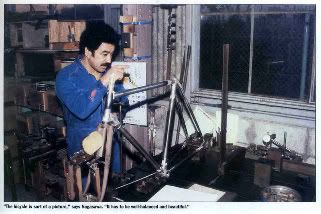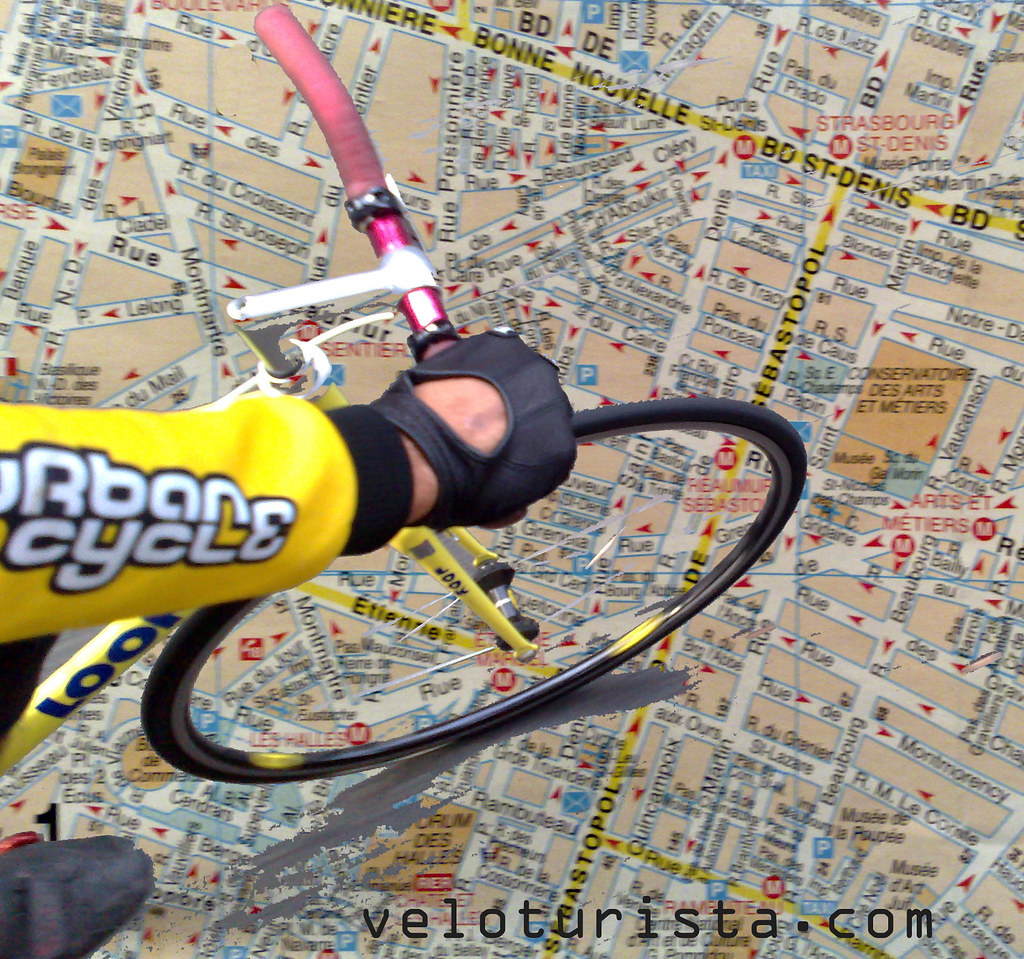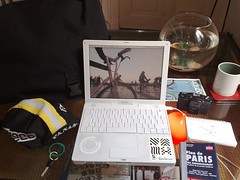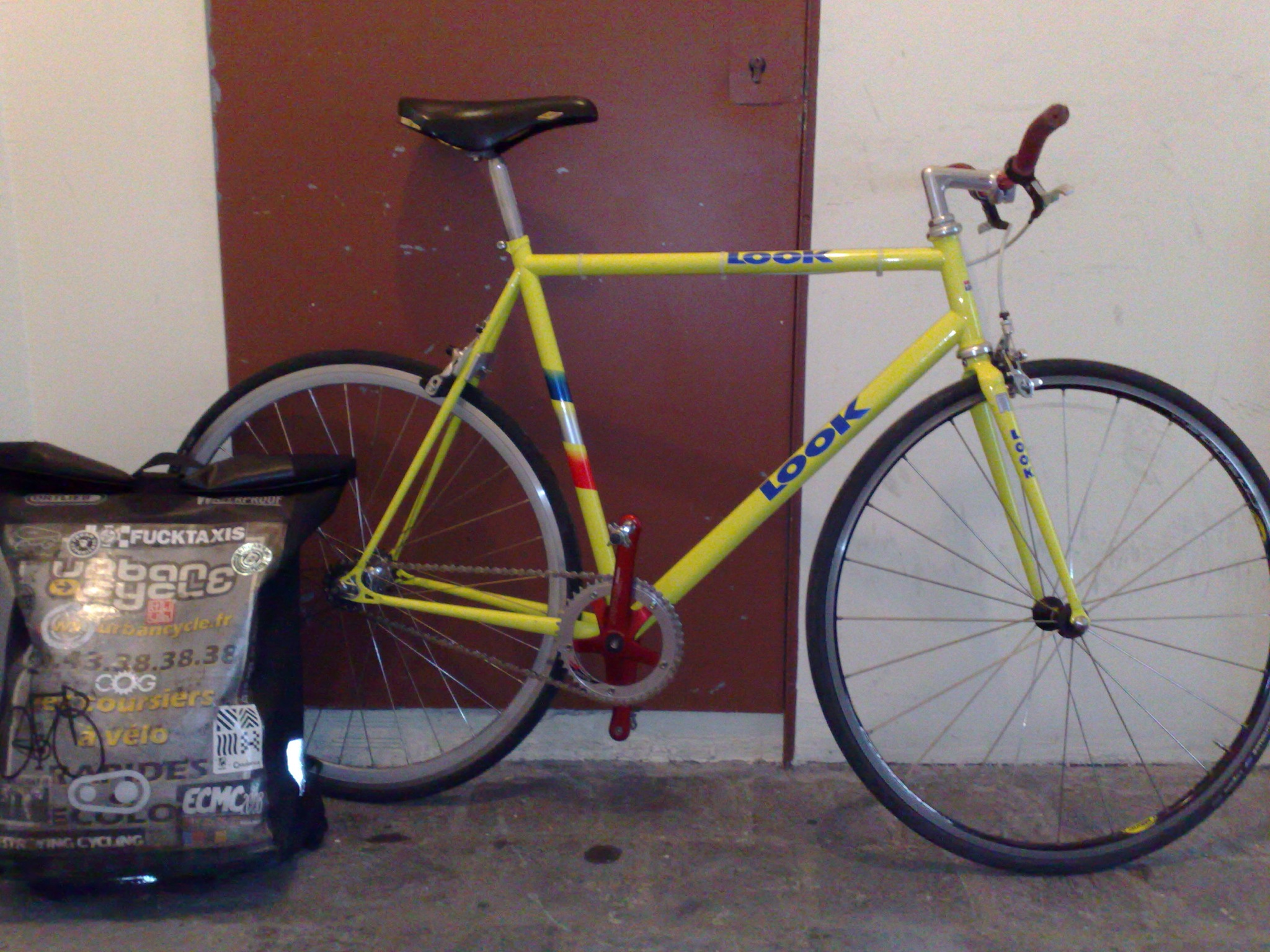
Excerpted from:
Tradition and Technology
by Ted Constantino
Bicycle Guide magazine June 1987
Yoshiaki Nagasawa's shop rests in the foothills southeast of Osaka, in the village of Kashiwara. It is a good location-far away from the choking smog and impenetrable traffic of the country's business capital, and close to the border of Nara prefecture, where good cycling roads await.
Not that Nagasawa has much time to ride these days. As Japan's most famous frame builder, he is swamped with more orders than he and his single assistant can possibly hope to fill. He holds up a piece of paper filled with customers' specifications and notes wryly, "Only one piece of paper makes 26 bicycles." The situation is hopeless, but not serious.
Nagasawa's chief claim to fame, of course, is that he builds bicycles for Koichi Nakano, the ten-time world professional sprint champion. Nakano is also one of the world's richest cyclists; he earns over $400,000 a year on the keirin circuit. That kind of success has garnered Nakano a lot of admiration and respect, and has given his frame builder the lion's share of the bicycle business among the top-ranked riders.
'There are about 50 builders registered with the Keirin Association," Nagasawa explains. As with every facet of life in Japan, there is a chart that breaks these numbers down, and he dutifully spreads the sheet before us. It lists the 50 frame- builders, including the major brands such as Bridgestone and Fuji, and notes how many of that builder's bicycles are used in each keirin class. 'You see, Fuji has 71 riders using their frame, but only two in the top classes. Bridgestone has 1154 bicycles ii@ use, but very few in the top classes." Nagasawa's finger traces his own chart listing: 68 bicycles in the top class, 25 of them in the first rank. 'So I am very busy," he laughs.
Nagasawa didn't have his heart set on frame building when he attended the 1964 Olympics in Tokyo. He had just finished his second year of high school, and had never competed in a bicycle race. The Olympics changed everything. "As soon as the last race was over, I joined my school's racing club," he recalls. But he admits he wasn't much of a competitor. 'I was more interested in the mechanics of the bicycle. At the time, the Japanese racing association was trying to make some standard specifications for the frames. They imported many bike;, most of them Cinellis, in an effort to create a standard." Nagasawa seized the opportunity to study the Italian exotics; he took each one completely apart and measured the pieces. He noticed other racers and mechanics doing it, too, and wondered if the Italians were, as scholarly in' their approach to the bicycle.
That natural curiosity took him to Italy the following spring. "I graduated from school in March, and in May I was in Italy, looking at bikes." Soon thereafter, he apprenticed himself to Sante Pogliaghi for a year, and then moved on to Ugo DeRosa's small shop, where he studied frame- building for four more years. When he returned to Japan, he brought the essence of Italian frame building with him.
'The bicycle is sort of a picture," he says of what he, learned; 'it is artistic. Each bike has a basic function and specification. In addition to that, though, the bike has to be well-balanced and beautiful, both by itself and when the rider is on it. I build every bicycle as if everybody sees it and appreciates its beauty. I don't build in a mechanical way, because even if a bike is 100-percent mechanically correct, if it looks ugly when the rider is on it, then it is not successful.
"All of my bikes are Italian-style bicycles. If you look at an Italian bicycle, you will see that it is complete. Some other bikes are not well balanced; the seat is too far forward or too far back, the cables are too long or too short- something seems incorrect. Italian bicycles, though, are correct. I try to bring that Italian completeness of concept to my work. I like to make the bicycle look fast."
Nagasawa's road and track frames follow the ancient Italian pattern-shallow angles for the road bikes, steeper ones for the track. He prefers Columbus SL for the road frames, and a mix of Tange No. I and No. 2 for the track frames. Beyond that, he simply fits the bicycle to the rider as best he can.
We follow him downstairs to his shop, a surprisingly high-ceilinged room (surprising because we gajiin can stand comfortably), and a sparsely appointed one. There is a freestanding jig in the room's center, and an elaborate alignment table near the windows. The table is Nagasawa's own design, and his principal point of departure from his Italian mentors. "When I studied with DeRosa, he measured everything horizontally. But I have difficulty doing that, so I finally built these tools to measure and build my frames vertically." Arranged on the table are a pair of gauges that automatically measure the head and seat angles. There is also a set of blocks cut in 1 mm increments that are used to check the height of the bottom bracket shell. "Apart from that, there's no magic. I do have a special technique for brazing, but it is hard to ex- plain. The main thing is that I study and learn, and try to improve every day. I never seem to catch up with what I want, though," he shrugs.
"I don't really think of myself as a frame builder," says the man who is famous throughout the bicycle world for just that skill. "The definition of what I am is complicated, but basically a frame- builder is just a welder. A real frame- builder, in my mind, is someone who makes a complete bicycle-every part, every component. They have to work together, so they should all be one.' He admits to frustration at not being able to make his own components. The ones he deals with are far from what he wants.
"The attitude of the Japanese parts makers is that they change the model every year, and even if a part is good, they change it. It's much better now than ten years ago, though. Back then, Campagnolo worked very hard making parts for racers or frame builders, but Japanese parts manufacturers only made parts to sell. Well, the communication wasn't good between the Japanese frame builders and the parts makers. The frame builders didn't make their desires known, they just bought parts from distributors. It was better for awhile, but with the business off in Japan the parts makers are just looking for a market again. Even Campagnolo is different now, with the death of Campagnolo-san." He shakes his head. "So much of what is done is just an image change."
Fortunately for Japan's premier cyclists, Nagasawa refuses to change. He makes about 300 bikes a year with the help of his lone assistant, who does-the pantographing headset installations, and other small tasks (but no frame building), and another helper to take care of the books. He figures he can keep accepting orders for seven or eight more years, but will have to turn away new work after that so that he can take care of his life- time customers.
"Every day, my work improves a little bit, I hope. So I think my future custom- ers are going to be getting better bikes." Better, perhaps, but not necessarily differ- ent. For in this land of constant change, of technology accelerating behind a runaway engine, Nagasawa's frames are a link to the traditions of cycling, and to the masters who have come before.
FINI





No comments:
Post a Comment